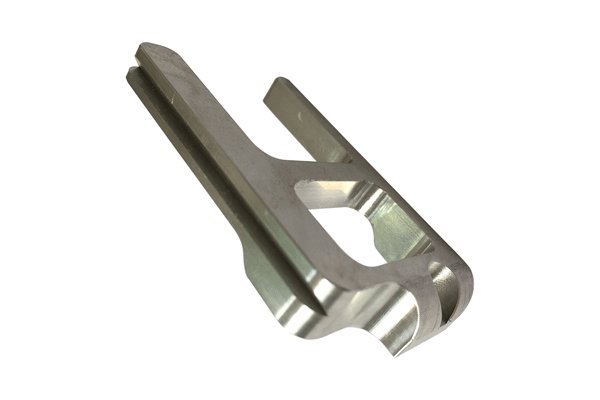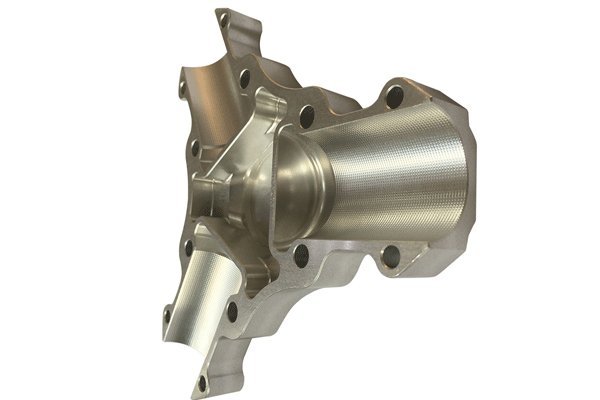In today’s fast-paced technological landscape, sensors play a pivotal role in an array of applications, from automotive to aerospace and medical devices. A striking statistic reveals that the global sensor market is expected to reach $306.32 billion by 2025, growing at a compound annual growth rate (CAGR) of 10.6%. With this skyrocketing demand, understanding the technical requirements for CNC machining of sensor parts in stainless steel becomes imperative for manufacturers aiming to maintain high quality and precision.
Understanding CNC Machining and Its Role in Sensor Production
CNC Machining Overview
Computer Numerical Control (CNC) machining is a modern manufacturing process that employs computerized controls to operate machinery and tools. This high-precision method is crucial for producing intricate components, particularly in industries where accuracy and reliability are non-negotiable, such as sensor manufacturing.
The Importance of Stainless Steel in Sensor Parts
Stainless steel is commonly utilized in the production of sensor parts due to its excellent mechanical properties, corrosion resistance, and durability. The material’s ability to withstand high temperatures and harsh environments makes it a go-to choice for sensors deployed in challenging conditions.
Technical Requirements for CNC Machining of Stainless Steel Sensor Parts
To guarantee the successful CNC machining of stainless steel sensor components, several critical technical requirements must be considered:
Selecting the appropriate grade of stainless steel is fundamental. Grades such as 304, 316, and 17-4 PH are popular due to their balance of strength and corrosion resistance. Each grade may suit different sensor applications based on environmental exposure and strength requirements.
The CNC machine must be capable of achieving the necessary tolerances and surface finishes. For stainless steel machining, a machine equipped with high spindle speeds and robust torque is essential. Additionally, precision ball screws and linear guides can enhance the machine’s performance in providing accurate movements.
Choosing the right cutting tools is vital. Carbide tools are commonplace for stainless steel machining due to their hardness and heat resistance. Coated tools can also improve performance by reducing friction and wear, allowing for higher feed rates and speeds.
Determining the optimal cutting parameters such as speed, feed rate, and depth of cut is critical. For instance, a slower feed rate can be beneficial for intricate work, while a higher spindle speed can help in reducing work hardening properties of stainless steel.

Effective cooling is essential during the machining of stainless steel to prevent overheating, which can lead to tool wear and compromised part integrity. Utilizing coolant not only reduces the heat but also helps in chip removal, ensuring a smoother machining process.
The finished parts must adhere to strict tolerance levels. Sensor applications often require dimensional tolerances in the range of ±0.005 inches or better, depending on the complexity of the part. Finishing processes, such as grinding and polishing, may be necessary to achieve desired surface roughness and functional characteristics.
Implementing robust quality control measures is vital for ensuring that all parts meet specific standards. Techniques such as coordinate measuring machines (CMM) can be employed for precision verification, while non-destructive testing (NDT) methods can assess the structural integrity of the components.
Sensor part design plays a significant role in manufacturability. Design engineers should work closely with machinists to ensure that parts are designed for CNC machining, enabling ease of manufacturing and assembly.
For sensors used in specialized industries such as aerospace or medical, it is essential to comply with industry-specific regulations. Adhering to standards such as ISO, AS9100, and FDA regulations ensures not only safety but also marketability.
Establishing efficient production practices and realistic timelines is crucial in the CNC machining of sensor parts. Effective supply chain management and inventory control strategies can assure timely delivery without compromising quality.
The Future of CNC Machining in Sensor Manufacturing
As technologies evolve, so does CNC machining. Innovations such as additive manufacturing and hybrid processes are beginning to play a role in the production of sensor parts. This trend is leading to lighter, stronger components being fabricated at reduced costs, offering further opportunities to enhance sensor technology.
In conclusion, the technical requirements for CNC machining sensor parts in stainless steel are multifaceted and demand careful attention to detail. From selecting the right material grade and tooling to ensuring compliance with regulatory standards and maintaining efficient production practices, each step is vital for achieving precision and reliability.
Understanding these requirements is not only important for manufacturers to remain competitive but also essential for the continued evolution of technology in industries reliant on sensors.
As you consider your own manufacturing strategies, reflect on the significance of these practices. Enhancing your knowledge of CNC machining techniques and embracing advancements in technology may well lead to better product development, greater customer satisfaction, and a solid position in the ever-growing sensor market.






